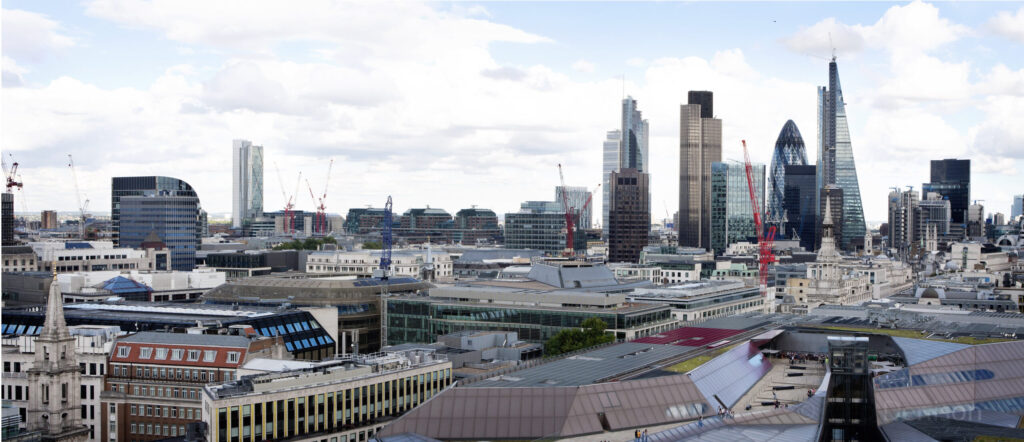I wish I could have spent more time at St. Paul’s Cathedral, but by the time I arrived, it was about 15 minutes before closing. I paid the 20 pounds and went to climb the stairs to the top, or as close to the top as I could get. The final set of stairs had a pretty long line, so I decided to spend the time snapping some pictures of the city from the level I was at and headed quickly to the basement and the graves.
St. Paul’s Cathedral’s origins can be traced back to the year 604 AD. However, the cathedral we know today has undergone several transformations over the centuries. During the Norman period, following a fire, the cathedral was rebuilt in 1087. It became one of the largest cathedrals in Europe during the Middle Ages. In 1666, the Great Fire of London ravaged the city and destroys the cathedral.
Renowned architect Sir Christopher Wren was appointed to oversee the construction of St. Paul’s after the fire. By 1711, the construction is complete and now featured the iconic dome that has made it a symbol of London. It remained the city’s tallest building until the mid-20th century. The city roads were plotted out to allow a view of the churches’ domes.



The Cathedral survived the bombing of London, damaged heavily, but survived to provide a location for the funeral services for Winston Churchill and Margaret Thatcher. It is also where Charles and Diana were married and many more.







